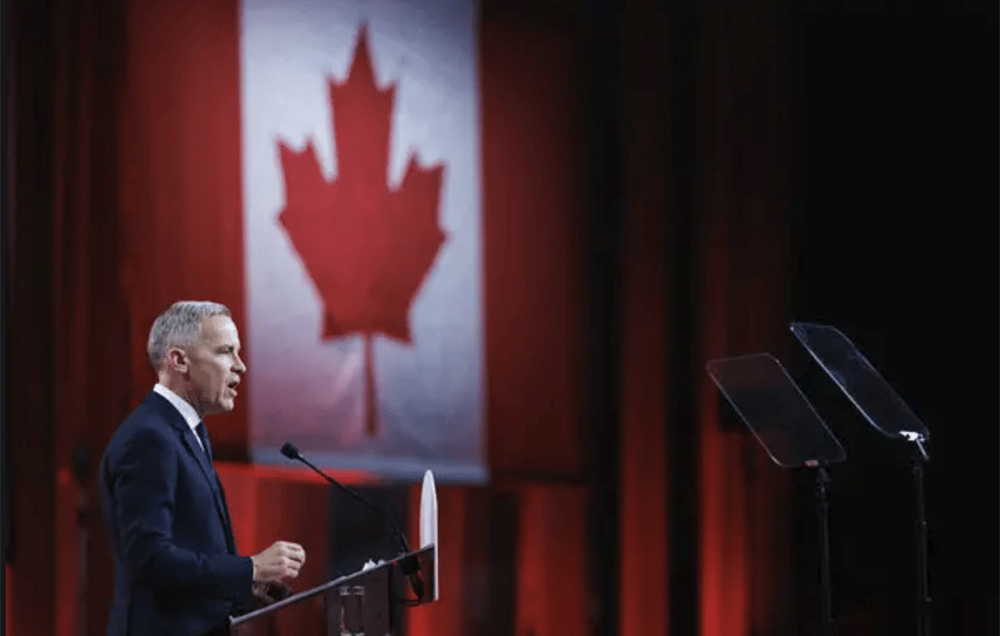Canada’s Anti-Trump Champion: Mark Carney Steps Up in a Time of Crisis
4/28/20254 min read


Canada’s Anti-Trump Champion: Mark Carney Steps Up in a Time of Crisis
April 27, 2025
Canada stands at a crossroads, facing an unprecedented challenge from its southern neighbor. President Donald Trump’s threats of tariffs and annexation have ignited a firestorm of nationalism, and one man has emerged as the nation’s unlikely defender: Mark Carney. A former central banker with no prior elected office, Carney is now Canada’s prime minister, leading the Liberal Party into a pivotal federal election on April 28. His campaign is a bold stand against Trump’s aggression, promising to protect Canada’s sovereignty and chart a path through economic turmoil. Here’s how Carney, a global financial veteran, became Canada’s anti-Trump warrior—and why this election could define the nation’s future.
From Global Banker to Canada’s Crisis Manager
Mark Carney’s rise to prime minister is a story of timing and expertise. For years, he flirted with Canadian politics, turning down Cabinet roles while building a storied career abroad. As governor of the Bank of Canada, he steered the country through the 2008 financial crisis. Later, as the first non-British governor of the Bank of England, he navigated the Brexit storm. His resume screams competence in chaos—a skill Canada desperately needs now.
In January 2025, Trump’s provocative moves changed everything. Tariffs on Canadian steel, aluminum, and other goods sent shockwaves through the economy, while his taunts about making Canada the “51st state” stoked outrage. Justin Trudeau’s resignation amid sagging polls left the Liberal Party scrambling. Carney, elected party leader on March 9 with 86% of the vote, was sworn in as prime minister days later. He called a snap election for April 28, framing it as a referendum on Canada’s strength against Trump’s threats.
A Campaign Built on Defiance
Carney’s campaign slogan, “Canada Strong,” captures the defiant mood sweeping the nation. Canadians are boycotting U.S. goods, canceling trips south, and waving flags with newfound fervor. Carney has leaned into this patriotism, positioning himself as the polar opposite of Trump: a calm, data-driven technocrat versus a bombastic populist. “Trump is trying to break us so America can own us,” he declared at a rally in Hamilton, Ontario. “They want our land, our resources, our water, our country. We will not let that happen.”
His platform is a blend of defense and offense. Carney pledges C$30.9 billion in military spending over four years, aiming to meet NATO’s 2% GDP target by 2030. He’s vowed to bolster Canada’s Arctic presence with Indigenous partnerships and European alliances. Economically, he proposes breaking inter-provincial trade barriers, supporting agriculture caught in Trump’s tariff crossfire, and investing in AI and quantum computing for military and economic edge. A middle-class tax cut and a plan to build 500,000 affordable homes annually round out his vision for a resilient Canada.
The Trump Factor: A Political Game-Changer
Trump’s actions have reshaped Canada’s election landscape. Early in 2025, the Conservative Party, led by Pierre Poilievre, held a commanding 20-point lead in polls. But Trump’s tariffs and annexation rhetoric flipped the script. By April, polls showed the Liberals ahead by six points, fueled by a surge in national unity. “Trump’s insertion into this election has made Canadians shift from domestic concerns to the external threat,” said David Coletto of Abacus Data.
Poilievre, a populist with a knack for retail politics, has struggled to match Carney’s crisis credentials. His “Canada First” campaign emphasizes sovereignty and self-reliance, but critics argue he’s been slow to confront Trump directly, alienating voters furious at the U.S. president. Some Conservatives even worry Poilievre’s own seat in Carleton could be at risk—a sign of the Liberals’ momentum.
Carney, meanwhile, has walked a tightrope. He’s promised dollar-for-dollar retaliatory tariffs and hinted at cutting energy exports to the U.S., a move echoed by Ontario Premier Doug Ford’s threats to halt electricity to 1.5 million Americans. Yet Carney also seeks a “holistic” trade deal with the U.S., signaling he’s open to negotiation—if Trump respects Canada’s sovereignty. A recent “constructive” call with Trump suggests cautious diplomacy, but Carney’s campaign rhetoric remains fiery.
A Novice Politician, A Seasoned Leader
Carney’s lack of electoral experience is both a strength and a vulnerability. His professorial demeanor and monotone delivery lack Trudeau’s charisma or Poilievre’s flair, but supporters see him as a steady hand. “Carney’s in full bird-flipping mode, and that’s what Canadians want right now,” said Andrew MacDougall, a former aide to Stephen Harper. His blandness is pitched as an antidote to Trump’s chaos, a “father-like figure” for a nation under siege.
Still, the campaign has exposed Carney’s inexperience. Poilievre has hammered him as a continuation of Trudeau’s “lost Liberal decade,” accusing him of ties to globalist policies that weakened Canada. A controversy over Carney’s role in Brookfield Asset Management’s office relocation to New York briefly dented his credibility, though he’s largely weathered the attack.
What’s at Stake on April 28
This election is Canada’s most consequential in decades, a single-issue ballot defined by Trump’s shadow. Will Carney’s expertise and defiance secure a Liberal fourth term, or will Poilievre’s political savvy reclaim the momentum? The outcome will shape Canada’s economy, its sovereignty, and its place in a world rattled by U.S. unpredictability.
As Carney told a crowd in Vaughan, Ontario, “These are not ordinary times. We are facing the biggest crisis of our lifetime.” His ability to channel Canada’s anger and optimism could decide whether he remains the nation’s defender—or hands the reins to a rival.
Thought Questions:
Can Mark Carney’s technocratic approach outshine Pierre Poilievre’s populist appeal in a crisis-driven election?
How should Canada balance retaliation and negotiation in dealing with Trump’s tariffs and annexation threats?
Will the surge in Canadian nationalism reshape the country’s political landscape beyond this election?
Photo Credit:Gettyimage
hello@boncopia.com
+13286036419
© 2025. All rights reserved.